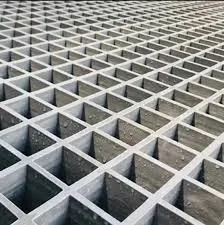
-
 Afrikaans
Afrikaans -
 Albanian
Albanian -
 Amharic
Amharic -
 Arabic
Arabic -
 Armenian
Armenian -
 Azerbaijani
Azerbaijani -
 Basque
Basque -
 Belarusian
Belarusian -
 Bengali
Bengali -
 Bosnian
Bosnian -
 Bulgarian
Bulgarian -
 Catalan
Catalan -
 Cebuano
Cebuano -
 China
China -
 China (Taiwan)
China (Taiwan) -
 Corsican
Corsican -
 Croatian
Croatian -
 Czech
Czech -
 Danish
Danish -
 Dutch
Dutch -
 English
English -
 Esperanto
Esperanto -
 Estonian
Estonian -
 Finnish
Finnish -
 French
French -
 Frisian
Frisian -
 Galician
Galician -
 Georgian
Georgian -
 German
German -
 Greek
Greek -
 Gujarati
Gujarati -
 Haitian Creole
Haitian Creole -
 hausa
hausa -
 hawaiian
hawaiian -
 Hebrew
Hebrew -
 Hindi
Hindi -
 Miao
Miao -
 Hungarian
Hungarian -
 Icelandic
Icelandic -
 igbo
igbo -
 Indonesian
Indonesian -
 irish
irish -
 Italian
Italian -
 Japanese
Japanese -
 Javanese
Javanese -
 Kannada
Kannada -
 kazakh
kazakh -
 Khmer
Khmer -
 Rwandese
Rwandese -
 Korean
Korean -
 Kurdish
Kurdish -
 Kyrgyz
Kyrgyz -
 Lao
Lao -
 Latin
Latin -
 Latvian
Latvian -
 Lithuanian
Lithuanian -
 Luxembourgish
Luxembourgish -
 Macedonian
Macedonian -
 Malgashi
Malgashi -
 Malay
Malay -
 Malayalam
Malayalam -
 Maltese
Maltese -
 Maori
Maori -
 Marathi
Marathi -
 Mongolian
Mongolian -
 Myanmar
Myanmar -
 Nepali
Nepali -
 Norwegian
Norwegian -
 Norwegian
Norwegian -
 Occitan
Occitan -
 Pashto
Pashto -
 Persian
Persian -
 Polish
Polish -
 Portuguese
Portuguese -
 Punjabi
Punjabi -
 Romanian
Romanian -
 Russian
Russian -
 Samoan
Samoan -
 Scottish Gaelic
Scottish Gaelic -
 Serbian
Serbian -
 Sesotho
Sesotho -
 Shona
Shona -
 Sindhi
Sindhi -
 Sinhala
Sinhala -
 Slovak
Slovak -
 Slovenian
Slovenian -
 Somali
Somali -
 Spanish
Spanish -
 Sundanese
Sundanese -
 Swahili
Swahili -
 Swedish
Swedish -
 Tagalog
Tagalog -
 Tajik
Tajik -
 Tamil
Tamil -
 Tatar
Tatar -
 Telugu
Telugu -
 Thai
Thai -
 Turkish
Turkish -
 Turkmen
Turkmen -
 Ukrainian
Ukrainian -
 Urdu
Urdu -
 Uighur
Uighur -
 Uzbek
Uzbek -
 Vietnamese
Vietnamese -
 Welsh
Welsh -
 Bantu
Bantu -
 Yiddish
Yiddish -
 Yoruba
Yoruba -
 Zulu
Zulu
Understanding the Benefits of Fiberglass Flanges in Modern Applications
Understanding Fiberglass Flanges An Overview
Fiberglass flanges are essential components in various industrial applications, serving as critical connectors for piping systems. Made from a polymer matrix reinforced with fiberglass, these flanges stand out for their unique combination of strength, durability, and lightweight properties. This article explores the characteristics, advantages, applications, and installation considerations associated with fiberglass flanges.
Characteristics of Fiberglass Flanges
Fiberglass flanges are crafted using a composite material that consists of glass fibers embedded in a resin matrix. This manufacturing process results in flanges that possess high tensile strength and excellent corrosion resistance. Unlike traditional metal flanges, fiberglass flanges do not rust or corrode, making them suitable for harsh environments, including chemical plants and wastewater treatment facilities. They are available in various sizes and standards to meet the requirements of different piping systems.
Advantages of Fiberglass Flanges
One of the most significant advantages of fiberglass flanges is their lightweight nature. Weighing substantially less than metal counterparts, these flanges reduce the overall weight of the piping system, making them easier to handle and install. This characteristic is particularly beneficial in applications where weight is a critical factor.
Moreover, fiberglass flanges offer superior thermal insulation properties, minimizing heat transfer in systems where temperature regulation is crucial. Their resistance to chemicals further enhances their usability, allowing them to withstand corrosive substances without degrading over time. This makes fiberglass flanges ideal for industries such as petrochemicals, pharmaceuticals, and food processing.
fiberglass flange

Applications
The versatility of fiberglass flanges allows them to be used in a wide range of applications. They are commonly found in industries that require robust and corrosion-resistant piping solutions. For instance, in the aerospace industry, fiberglass flanges are employed in fuel systems where weight and chemical resistance are paramount. In the marine industry, they are used in shipbuilding and repair, offering durability in saltwater environments.
In the construction sector, fiberglass flanges are utilized in systems where both the integrity of the structure and the safety of conveyed materials are critical. Additionally, they are increasingly being adopted in renewable energy applications, such as wind and solar power systems, where corrosion resistance and reduced weight lead to more efficient designs.
Installation Considerations
When installing fiberglass flanges, it is essential to follow specific guidelines to ensure a proper fit and function. Proper alignment with the connecting pipes is crucial to prevent stress and potential damage. Because fiberglass flanges can be sensitive to over-tightening, it is important to use the correct torque specifications during installation. Additionally, using compatible gaskets can enhance the sealing capabilities and overall integrity of the piping system.
In conclusion, fiberglass flanges represent a high-performance alternative to traditional metal flanges in various industries. Their unique properties, including lightweight nature, corrosion resistance, and thermal insulation, make them invaluable in modern engineering applications. As industries continue to prioritize efficiency and durability, the demand for fiberglass flanges is likely to grow, marking them as a pivotal component in the evolution of piping systems.
Latest news
-
Exploring the Benefits of Top Hammer Drifter Rods for Enhanced Drilling PerformanceNewsJun.10,2025
-
High-Precision Fiberglass Winding Machine for GRP/FRP Pipe Production – Reliable & Efficient SolutionsNewsJun.10,2025
-
FRP Pipes & Fittings for Shipbuilding - Corrosion-Resistant & LightweightNewsJun.09,2025
-
Premium FRP Flooring Solutions Durable & Slip-ResistantNewsJun.09,2025
-
Premium Fiberglass Rectangular Tanks Durable & Lightweight SolutionNewsJun.09,2025
-
Tapered Drill String Design Guide Durable Performance & UsesNewsJun.09,2025









